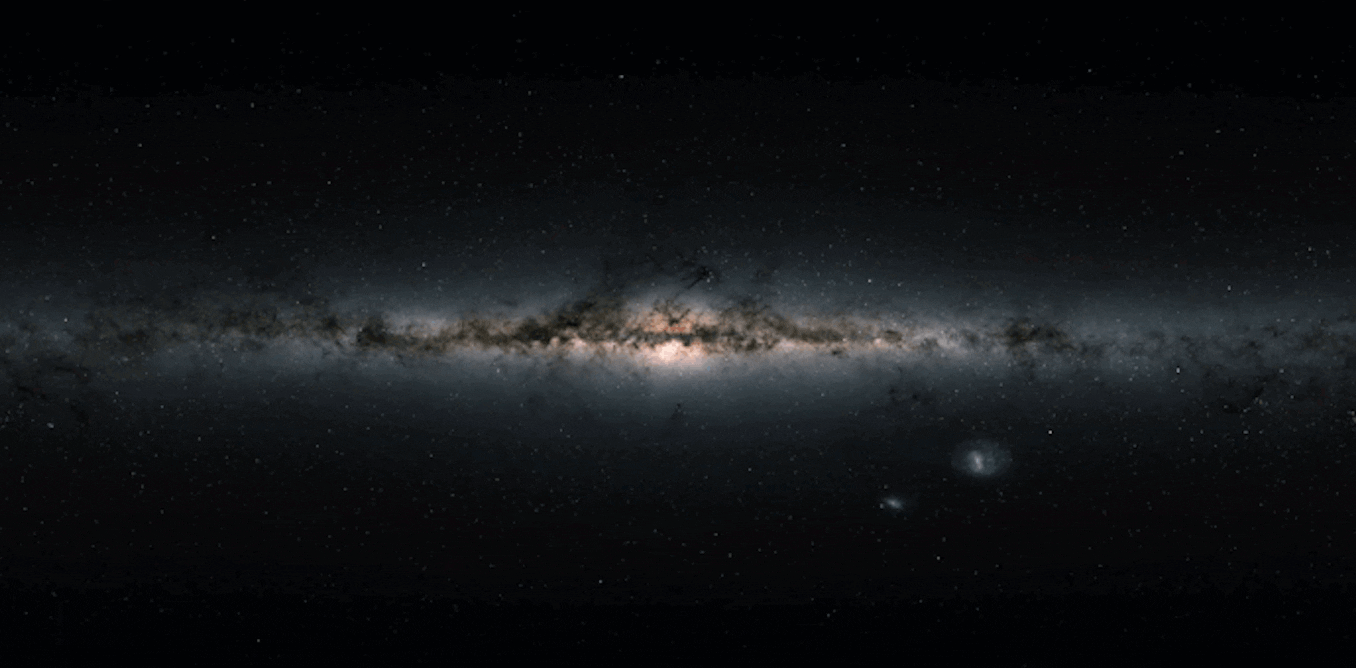Science
Swiss Astronomers Revolutionize Astronomy with Exoplanet Discovery

On October 6, 1995, at a scientific conference in Florence, Italy, Swiss astronomers Michel Mayor and his PhD student Didier Queloz made a groundbreaking announcement that reshaped our understanding of the universe. They revealed the detection of a planet orbiting a star outside our solar system, specifically a star known as 51 Pegasi, located approximately 50 light years away in the constellation Pegasus. This exoplanet, named 51 Pegasi b, was a gas giant unlike anything previously conceived, with a mass at least half that of Jupiter, orbiting its star in just over four days.
The discovery was made possible through the use of the Elodie spectrograph, installed at the Haute-Provence observatory in southern France. This instrument analyzed starlight, revealing a spectrum that acted as a “stellar barcode,” providing crucial information about the star’s chemistry. Mayor and Queloz observed a rhythmic shift in the spectrum of 51 Pegasi every 4.23 days, indicating the gravitational influence of the unseen exoplanet.
Despite initial skepticism, this revolutionary finding was confirmed by other research teams within weeks. It marked the first instance of a planet orbiting a Sun-like star outside our solar system, introducing the concept of a “hot Jupiter” due to its extreme proximity to its star, leading to surface temperatures exceeding 1,000°C. The front cover of the Nature journal featuring their work posed the question, “A planet in Pegasus?”
Impact of the Discovery
The discovery of 51 Pegasi b opened the floodgates to exoplanet research. Since that pivotal moment, over 6,000 exoplanets and candidates have been catalogued, showcasing a staggering variety of planetary types. These include ultra-hot Jupiters with temperatures exceeding 2,000 °C, multi-star systems reminiscent of Tatooine from the Star Wars saga, and “super-puff” gas giants larger than Jupiter yet with significantly less mass.
In recognition of their significant contribution to astronomy, Mayor and Queloz were awarded the Nobel Prize in Physics in 2019. Their work has led scientists to infer that most stars possess planetary systems, yet despite the thousands of exoplanets discovered, none have been found that closely resemble our own solar system.
The quest to identify an Earth-like planet—one that mirrors Earth in size, mass, and temperature—continues to drive astronomers today. While modern expeditions do not require perilous journeys, they do involve meticulous observations from remote mountain-top observatories, such as the Harps-N spectrograph on the Telescopio Nazionale de Galileo in the Canary Islands.
The Evolution of Exoplanet Studies
Prior to the mid-1990s, humanity had only the Solar System as a reference point for understanding planetary formation and evolution. Theoretical frameworks were largely based on just nine planets, which limited insights into the vast cosmos. Greek philosophers like Epicurus and Aristotle offered contrasting views on the existence of multiple worlds, but it wasn’t until the 20th century that substantial shifts in understanding began to occur.
In the 1940s, the scientific community began to pivot dramatically. The failures of the earlier tidal hypothesis of planet formation shifted focus to the recognition that planets are likely a natural byproduct of star formation. This realization paved the way for the belief that billions of planets could exist within the Milky Way galaxy. An article by astronomer Henry Norris Russell in 1943 marked a turning point, suggesting that inhabited planets could be numerous.
The techniques for detecting exoplanets have evolved significantly since Mayor and Queloz’s initial discovery. The transit method, first applied successfully by Canadian astronomer David Charbonneau in 1999 with the detection of the exoplanet HD209458b, measures the dimming of a star as a planet passes in front of it. This method has now resulted in four times more discoveries compared to the radial velocity technique used in the initial detection.
Currently, the radial velocity method continues to be employed, measuring the slight wobbles in a star’s motion caused by the gravitational pull of orbiting planets. Advanced instruments like the Harps-N spectrograph can detect minuscule velocity shifts, but the quest for a true Earth twin remains challenging.
As research continues, the potential for groundbreaking discoveries in the field of exoplanets grows. Collaborative efforts, such as the development of the new Harps3 instrument scheduled for installation at the Isaac Newton Telescope, aim to further refine the search for Earth-like planets.
The ongoing exploration of exoplanets not only enhances our understanding of planetary systems but also fuels the hope of discovering life beyond Earth. The pursuit of a true Earth twin—a planet with similar characteristics to our own—remains the ultimate goal for astronomers worldwide.
-

 Health3 months ago
Health3 months agoNeurologist Warns Excessive Use of Supplements Can Harm Brain
-

 Health3 months ago
Health3 months agoFiona Phillips’ Husband Shares Heartfelt Update on Her Alzheimer’s Journey
-

 Science2 months ago
Science2 months agoBrian Cox Addresses Claims of Alien Probe in 3I/ATLAS Discovery
-

 Science2 months ago
Science2 months agoNASA Investigates Unusual Comet 3I/ATLAS; New Findings Emerge
-

 Science1 month ago
Science1 month agoScientists Examine 3I/ATLAS: Alien Artifact or Cosmic Oddity?
-

 Entertainment5 months ago
Entertainment5 months agoKerry Katona Discusses Future Baby Plans and Brian McFadden’s Wedding
-

 Science1 month ago
Science1 month agoNASA Investigates Speedy Object 3I/ATLAS, Sparking Speculation
-

 Entertainment4 months ago
Entertainment4 months agoEmmerdale Faces Tension as Dylan and April’s Lives Hang in the Balance
-

 World3 months ago
World3 months agoCole Palmer’s Cryptic Message to Kobbie Mainoo Following Loan Talks
-

 Science1 month ago
Science1 month agoNASA Scientists Explore Origins of 3I/ATLAS, a Fast-Moving Visitor
-

 Entertainment2 months ago
Entertainment2 months agoLewis Cope Addresses Accusations of Dance Training Advantage
-

 Entertainment4 months ago
Entertainment4 months agoMajor Cast Changes at Coronation Street: Exits and Returns in 2025









